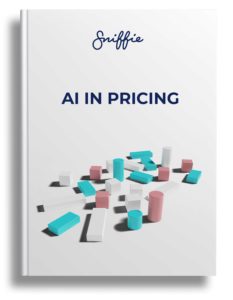Pricing is a crucial aspect of any Ecommerce and retail activities. This blog post is looking into the pricing trends affecting retail and Ecommerce companies in 2023. Trends we expect to shape the retail and Ecommerce market.
The current economic climate is challenging.
The Ecommerce and retail industry is constantly evolving and adapting to current market conditions. As a result, one of the key areas that businesses should pay close attention to is pricing. In 2023, we can expect to see several factors affecting the pricing landscape. You don’t have to be an expert in feeling these—increased costs of living, high inflation rates, and changes in regulations.
The last year’s cost of living rose due to higher interest rates, increasing inflation, and significantly increased energy costs. These have directly impacted consumers and businesses alike. Naturally, this trend will affect on consumer purchase power. As housing is in many cases, the main investment people make, hopefully, we are not seeing a quick drop on the housing market. That would make the market even more challenging.
How will these affect retail companies?
As the cost of living increases, it also affects the pricing of goods and services, as businesses are forced to pass on these increased costs to their pricing. As retailers face high purchase price increases, it puts immediate pressure on their ability to maintain competitive prices and keep their margins positive.
High inflation is rough for most economies. As said above, when prices for goods and services rise, consumers are often less willing to purchase them, or at least they look for the cheapest option when in need. This concept is called price elasticity of demand. It will have a significant impact on a retailer’s bottom line. All retailers try to fight inflation by raising prices instead of keeping prices low. Mistakes in pricing create lower sales volumes and then lower overall margins, making it difficult for them to stay in business. Especially hard for companies that are not the cost-leaders in their industry. Those with the lowest operating costs, will take the market more quickly.
New regulations on EU campaigning
The European Union (EU) has also introduced new regulations regarding advertising product discounts called Omnibus Directive or Price Indication Directive. The requirement to show the lowest 30-day lowest price for every product in a discount campaign means that retailers must focus on making real discounts. The discount only appeals if the comparison and the lowest 30-day price are reasonable. This lowers the urge to buy and lowers the effectiveness of pricing campaigns.
These factors have created the challenging year 2023 for retailers and Ecommerce alike, who must find ways to remain competitive and profitable while facing rising costs and changing regulations. As a result, businesses will need to stay on top of the latest pricing trends and be prepared to adapt their strategies accordingly. In the following sections, we will explore the various pricing trends likely to emerge in 2023 and what businesses can do to stay ahead of the curve.
Why machine learning and AI are the future of product pricing?
AI is a buzzword like no other. We sat down, wrote all we know about it and let you be the judge. Here is a seriously indepth 50-page insights on how to use artificial intelligence in pricing. Hope you find it useful!

Pricing trends of 2023
Focusing on profitability
One trend we expect to see in 2023 is a focus on pricing profitability using internal data. With the pressure of high costs and low margins, retailers are better equipped when they understand real demand. What prices bring the best result? What prices will make the most profit? The other thing that is often neglected is the cross-elasticity of demand. When you price one product, it might bring good results, yet eat other products’ sales and profitability. By utilizing internal data, retailers can identify the most profitable products and make informed pricing decisions.
Increased transparency in pricing
Another example of the pricing trends we expect to see in 2023 is increased transparency in pricing. Fast and frequent price changes and new regulations will mean that consumers expect prices to change. Being open about it will help. Therefore companies can turn this into a strength by being transparent about their pricing. It will be ethically correct and save consumers and the company money in the long run.
Focusing on products that matter
Many retail companies have large catalogs in which some products do not sell. Especially after price increases have been done without analytics, one trend will be focusing on Key Value Items (KVI) products (products that do your business), decreasing the size of their product assortment, and focusing on products to do campaigning with. To survive, retailers of all sizes will need a more focused approach on which products bring in most of their profitability (using the simple Pareto principle). Focusing on products that matter will help retailers make more informed pricing decisions and increase overall profitability.
Dynamic pricing becomes more mainstream
Dynamic pricing will also become more prevalent in 2023, as retailers must keep KVI products in line with the competition. With the rise of costs in Google Shopping and consumers looking for secure options to buy, retailers will find that the best position to keep their pricing is between the market minimum and market average prices. We have seen this in the last years due to working with a lot of dynamic pricing. For a good starting point you can read our earlier blog post on How to prepare your Ecommerce for Dynamic Pricing.
Retail and Ecommerce companies turn to pricing automation
In addition, pricing automation and increased usage of AI in pricing will become more common as prices rise and the number of product price changes increases. Unfortunately, this will make it challenging to do pricing by hand; thus, retailers will need to adopt pricing automation to keep up.
Pricing tags will make an impact in the Omnichannel approach
Lastly, we can expect to see an increase in digital price tags in 2023. As price changes are frequent, retailers will find it increasingly difficult to change physical tags quickly. Digital price tags offer a more efficient and cost-effective solution and will become more widespread.
In conclusion, retailers and Ecommerce businesses will need to be proactive in monitoring these pricing trends and make necessary adjustment to their pricing approach in 2023 to stay competitive and profitable. Start now, is a good tip.


